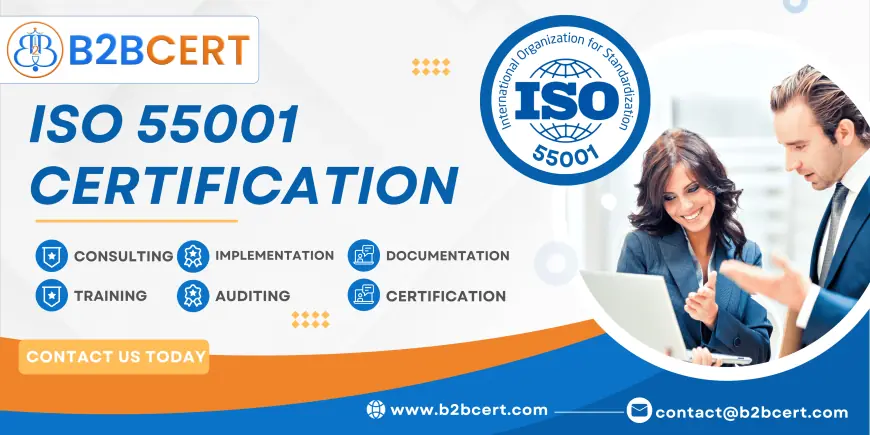ISO 55001 Certification in Australia
ISO 50001 in Australia ISO 50001 Cost in Australia ISO 50001 Audit in Australia
ISO 55001 Certification is an internationally recognized standard for asset management, and its implementation has gained significant traction in Australia across various industries. The certification sets a framework for organizations to establish, implement, maintain, and improve their asset management systems (AMS), ensuring the optimal life cycle of assets to maximize value, performance, and sustainability.
Understanding ISO 55001
ISO 55001:2014, developed by the International Organization for Standardization (ISO), outlines the requirements for an effective asset management system. This standard is designed to help organizations manage their assets systematically and strategically. Asset management, in this context, refers to the coordinated activities and strategies that organizations use to efficiently manage their physical assets (e.g., machinery, infrastructure, equipment) throughout their entire life cycle—from planning and acquisition to operation and decommissioning.
ISO 55001 Certification in Australia has become an essential tool for organizations aiming to improve their asset management practices and demonstrate their commitment to long-term sustainability and operational efficiency. The certification ensures that companies are managing their assets in alignment with best practices, improving risk management, reducing costs, and enhancing organizational performance.
Importance of ISO 55001 in Australia
Australia has a diverse range of industries—mining, construction, energy, transportation, and manufacturing—that rely heavily on asset management to sustain operations and ensure safety and compliance. ISO 55001 Services in Australia offers a structured approach that assists Australian organizations in addressing the challenges associated with managing a large portfolio of assets.
The standard is particularly crucial in industries such as utilities, infrastructure, and public services, where asset failure or inefficient management can have serious financial and safety consequences. With ISO 55001 certification, organizations can adopt a lifecycle approach to asset management, focusing on the long-term costs, performance, and risks of assets rather than just initial investment or short-term goals. This results in better decision-making, enhanced value for money, and the ability to meet the demands of a competitive market.
Steps to Achieve ISO 55001 Certification in Australia
The process of obtaining ISO 55001 certification typically involves several key steps:
-
Gap Analysis: Organizations begin by assessing their existing asset management processes and comparing them against the requirements of ISO 55001. A gap analysis helps identify areas where the organization’s asset management practices are lacking and need improvement.
-
Implementation of an Asset Management System: Based on the findings of the gap analysis, the organization then develops and implements an asset management system. This system includes policies, procedures, risk assessments, and performance objectives aligned with the ISO 55001 Audit in Australia.
-
Internal Audit: Once the system is implemented, an internal audit is conducted to evaluate the effectiveness of the asset management system. This helps identify areas of improvement and ensures the system is working as intended.
-
Certification Audit: After the internal audit, the organization undergoes an external audit by a certification body accredited by the Joint Accreditation System of Australia and New Zealand (JAS-ANZ). This audit ensures that the organization is fully compliant with ISO 55001 requirements.
-
Continuous Improvement: After certification is granted, organizations must continuously monitor and improve their asset management system to maintain compliance and ensure ongoing optimization of their asset lifecycle management.
Benefits of ISO 55001 Certification
Achieving ISO 55001 certification offers several key benefits for Australian organizations:
-
Improved Efficiency and Cost Management: By managing assets throughout their entire life cycle, organizations can identify inefficiencies and make informed decisions to reduce costs. This leads to better resource allocation and improved financial performance.
-
Risk Mitigation: ISO 55001 emphasizes risk management, ensuring that organizations can proactively address asset-related risks. This reduces the likelihood of asset failure and enhances the overall reliability of operations.
-
Enhanced Stakeholder Confidence: Certification provides confidence to stakeholders, including customers, investors, and regulators, that the organization is committed to managing its assets responsibly and sustainably.
-
Compliance and Safety: ISO 55001 helps organizations meet regulatory requirements and industry standards, ensuring that they remain compliant with laws related to asset management, environmental impact, and safety.
-
Continuous Improvement: The framework encourages organizations to continually assess and refine their asset management practices, fostering a culture of improvement and innovation.
Conclusion
ISO 55001 Consultants in Australia has become an essential tool for organizations looking to manage their assets more effectively and demonstrate their commitment to sustainability and operational excellence. By adopting a structured asset management system, organizations can improve asset performance, reduce costs, mitigate risks, and enhance stakeholder confidence. Whether in infrastructure, energy, or any other industry, ISO 55001 provides Australian organizations with the tools to optimize their asset management strategies and drive long-term success.













